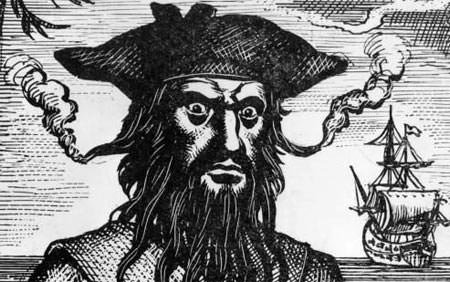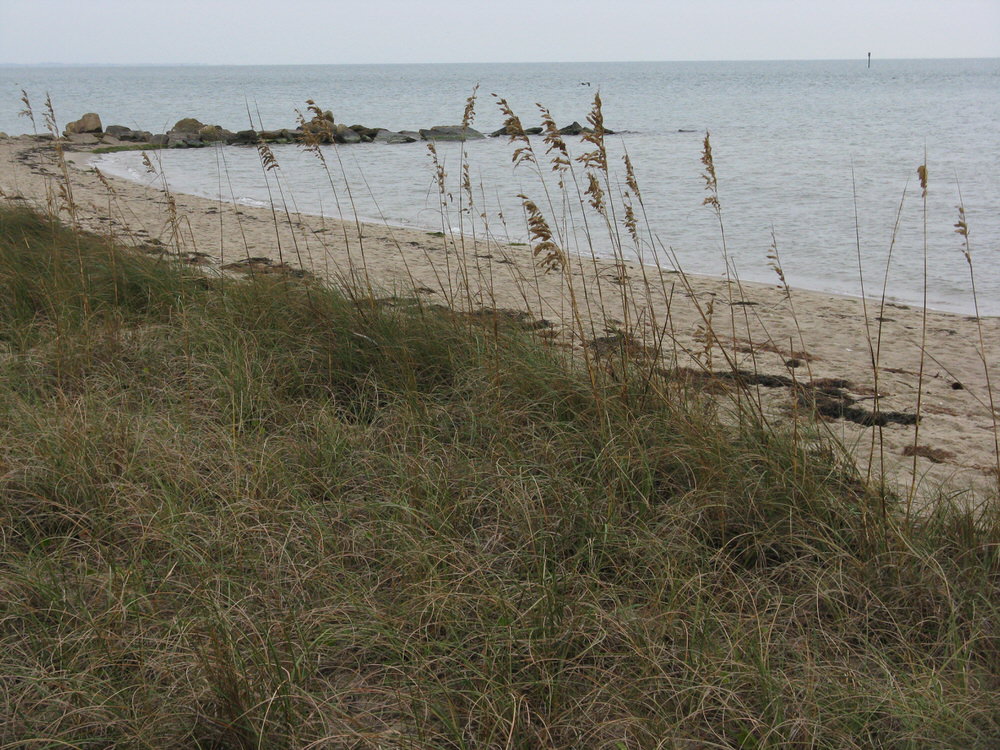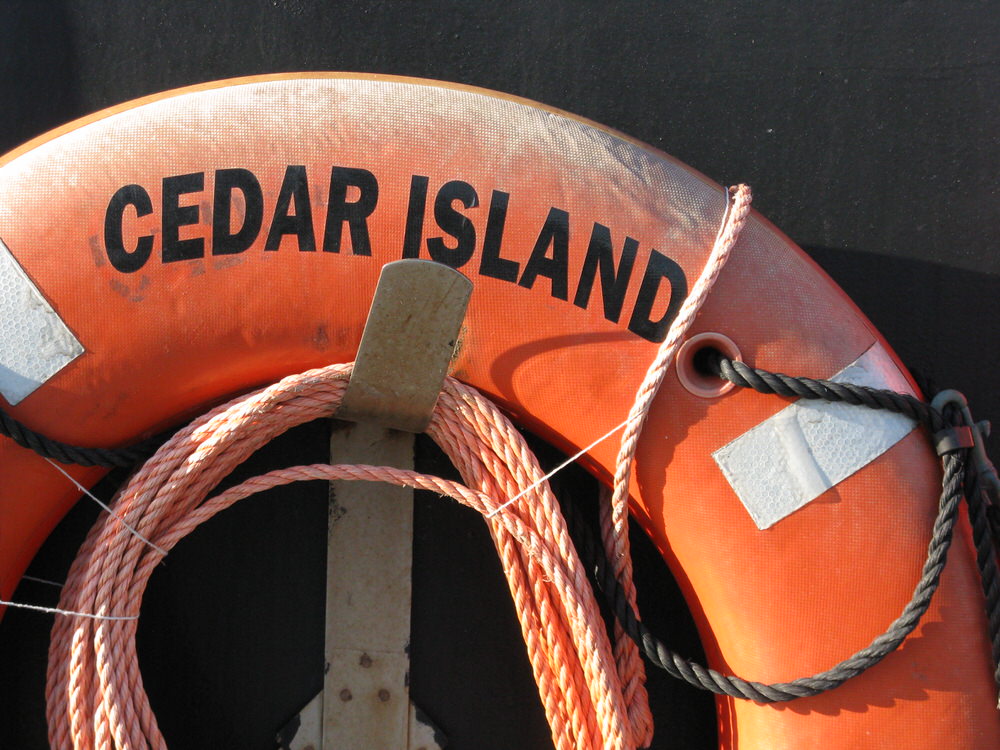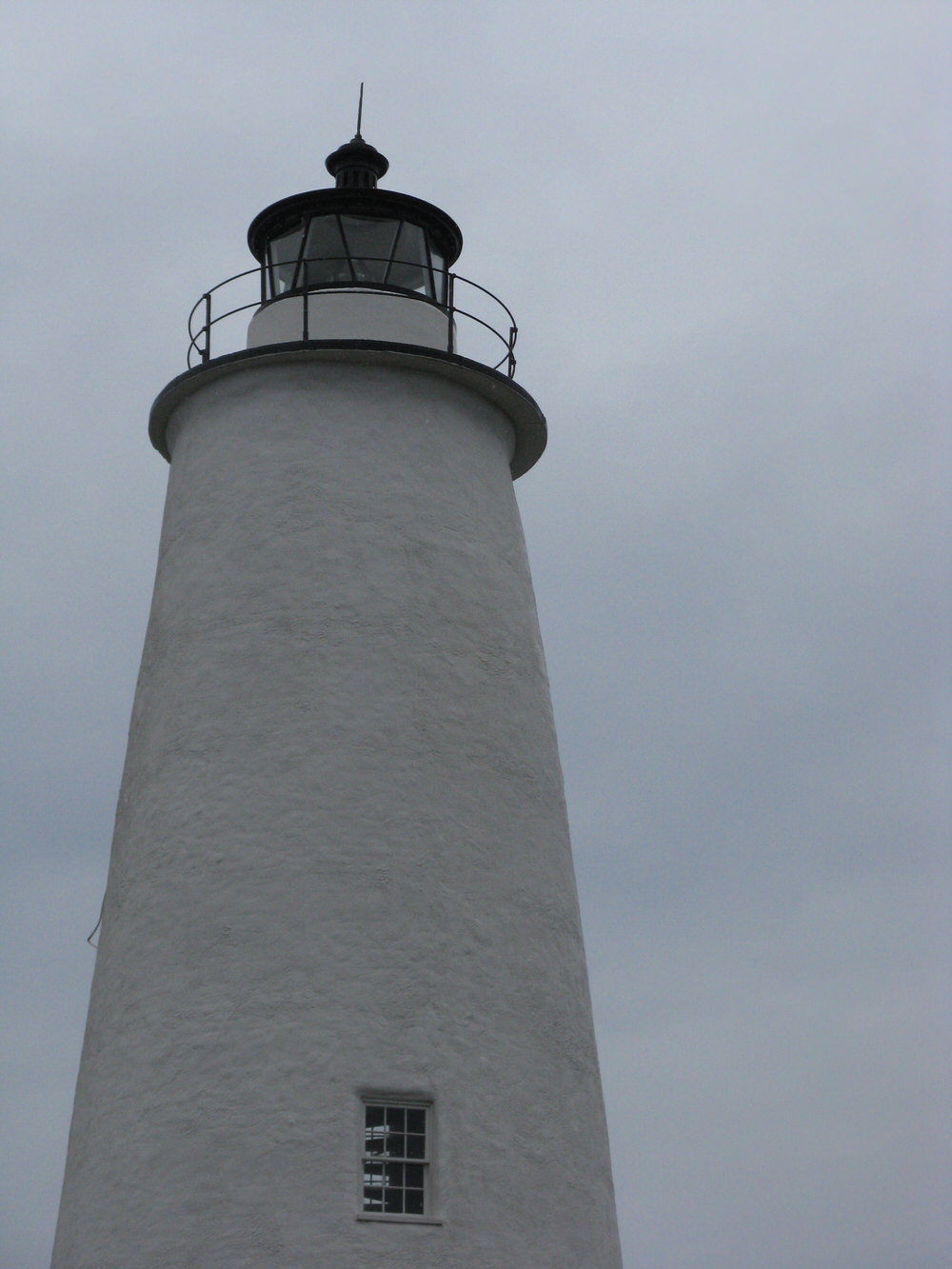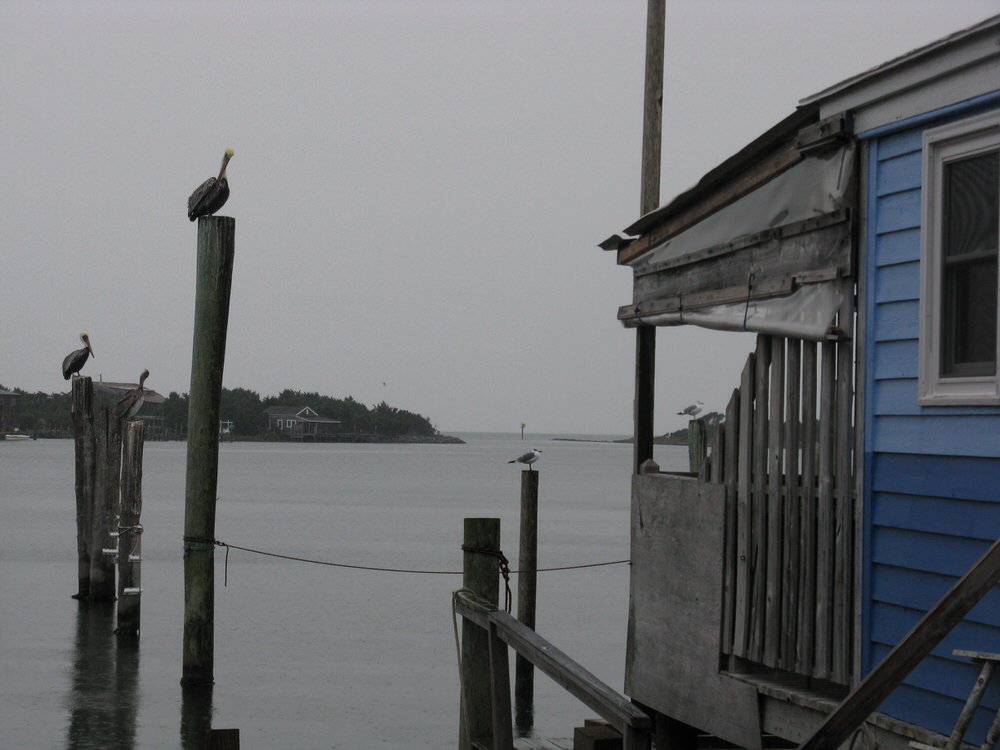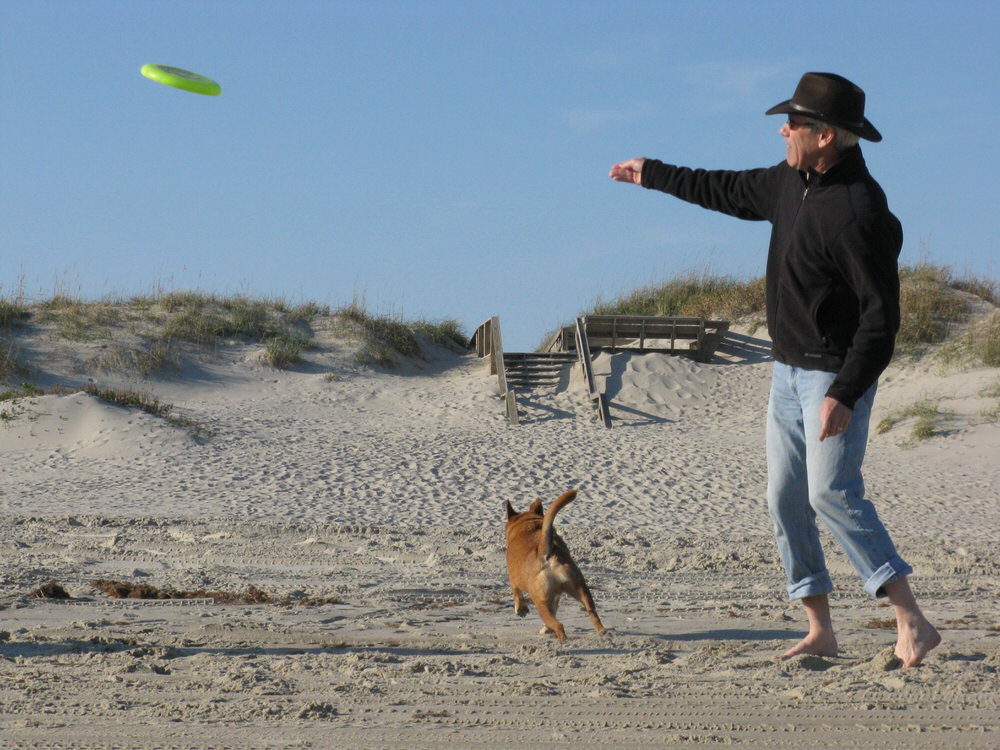Lighted coals smoking in his beard, the pirate Blackbeard terrorized the Atlantic seaboard for years, stealing merchant ship cargo and murdering all who challenged him. The savage pirate met his demise near Ocracoke Island, the southernmost of North Carolina’s Outer Banks in November 1718 at the hands of British Navy Lieutenant Robert Maynard. According to legend, when Maynard beheaded the pirate and threw his body in the water, the body swam seven laps around the ship before sinking to the bottom of Pamlico Sound.
My family and I spent a peaceful Thanksgiving holiday in Blackbeard's former stomping grounds. We stayed in a three-bedroom house on Fig Tree Lane, ate seafood for dinner and walked everywhere we went.
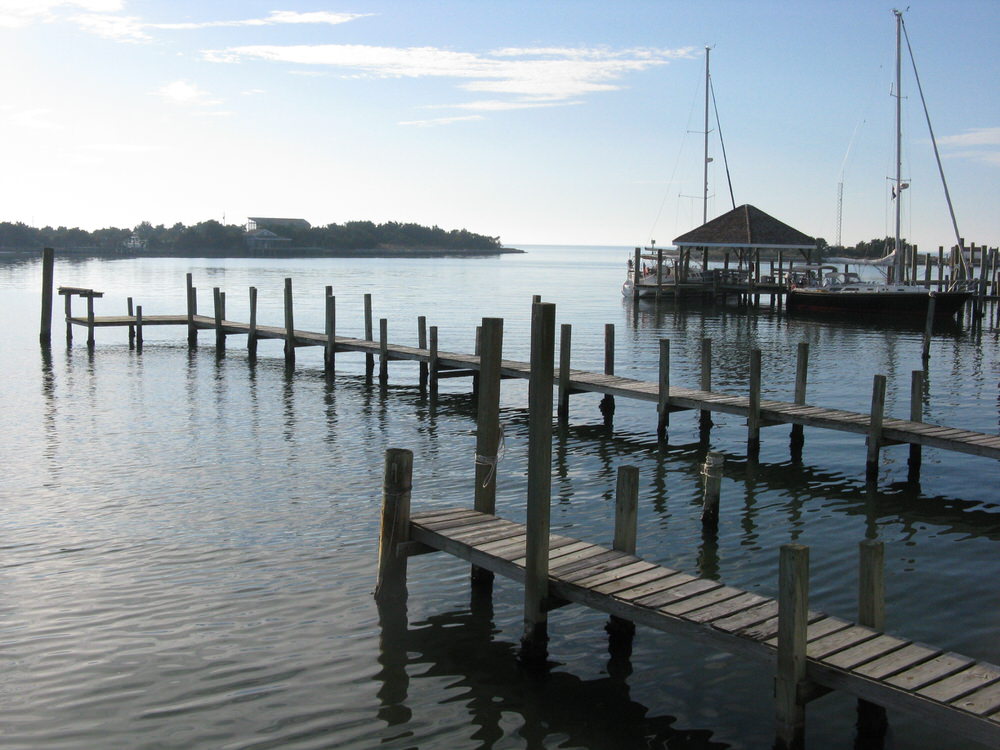 Boat docks in Silver Lake, on the western side of the island
Boat docks in Silver Lake, on the western side of the island
Ocracoke Island sits 23 miles off the North Carolina coast and a quarter mile south of Hatteras Island. It usually measures 17 miles long and a mile wide. The deserted, windblown beaches of the Cape Hatteras National Seashore make up the northern 90 percent of the island, and a small village of hotels, restaurants, shops, homes and the smallest K-12 school in the state, makes up the southern 10 percent.
With no bridges connecting it to the mainland, Ocracoke is accessible only by the Cedar Island, Swan Quarter and Hatteras ferries that arrive and depart several times each day. We waited in the rocking chairs at the ferry terminal for the mustached men to give us permission to board and, once cruising across the sound at a steady 12 mph, could see dolphins leaping in front of the ferry and pelicans and seagulls hovering behind.
In case of emergencies
Ocracoke's whitewashed lighthouse, built in 1823, is the second oldest of those still in use in the United States. It's light reaches out 14 miles over the sea.
A couple buildings in Ocracoke Village stand more than three stories tall and a few shops sell kitsch like keychains and coozies, but many parts look as if they haven’t been touched for a hundred years. Gnarled oaks, red cedars and wax myrtles are rooted in the island’s sandy soil; crushed oyster shells litter the unpaved roads (making bare feet a bad idea); and every now and then, you come across a fenced rectangle containing the mossy headstones of a family graveyard.
My family strolling beneath the oak trees shell-covered Howard Street
Pelicans perched over Silver Lake
Mallards resting in the rain
Island natives — whose surnames are often Howard, Styron or Garrish — still speak with a brogue inherited from the Scotch-Irish who settled the island during the 18th century. On their tongues, "there" becomes "thar," "fire" becomes "far" and “high tide” becomes “hoi toide.”
Music is central to island life. Every Wednesday night from June to September, local musicians perform for a crowd of locals and visitors at the Deepwater Theater, a screen-enclosed deck tucked among a grove of low, crooked trees. Under the tin roof and the rafters strung with lights, performers sing lively and sorrowful stories to a crowd sitting captivated in green lawn chairs.
In addition to eating a feast of turkey, stuffing and cranberry sauce during the holiday weekend, we walked on the beach, explored the shops and art galleries about to close for the winter and listened to a post-Thanksgiving Ocrafolk music concert in the community center. It was there I purchased a piece of homemade gingerbread cake and dropped it on the floor before paying.
My uncle Jim tossing a disc for his dog Sammy along the national seashore
We also walked around Springer's Point, the highest spot on the island and home to a grove of especially impressive trees, like this one:
The headstone of Ikey D., the favorite horse of Sam Jones, former owner of Springer’s Point

